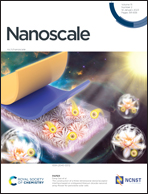Transformation mechanism of high-valence metal sites for the optimization of Co- and Ni-based OER catalysts in an alkaline environment: recent progress and perspectives
Abstract
As an important semi-reaction process in electrocatalysis, oxygen evolution reaction (OER) is closely associated with electrochemical hydrogen production, CO2 electroreduction, electrochemical ammonia synthesis and other reactions, which provide electrons and protons for the related applications. Considering their fundamental mechanism, metastable high-valence metal sites have been identified as real, efficient OER catalytic sites from the recent observation by in situ characterization technology. Herein, we review the transformation mechanism of high-valence metal sites in the OER process, particularly transition metal materials (Co- and Ni-based). In particular, research progress in the transformation process and role of high-valence metal sites to optimize OER performance is summarized. The key challenges and prospects of the design of high-efficiency OER catalysts based on the above-mentioned mechanism and some new in situ characterizations are also discussed.

- This article is part of the themed collections: Celebrating 25 years of the Key Laboratory for Special Functional Materials at Henan University and Recent Review Articles


 Please wait while we load your content...
Please wait while we load your content...